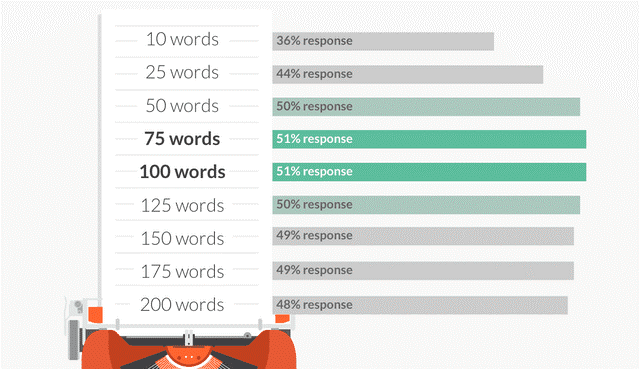How Much Can You Do in 12 Seconds?
Maybe you could just about grab a cappuccino from the coffee machine? The truth is there aren’t a lot of things that can be completed in 12 seconds. It most likely takes you longer to decide what you’ll be watching on Netflix tonight (85 times longer, if we go by online statistics). Yet 12 seconds is the average time people spend reading an email.
If you work in email, you’ll have heard of the 12 second rule before. According to Litmus research the average time spent reading an email has increased by nearly 7% in the past six years, which is promising news for marketers but you’re still left with a very limited window. Here are the big questions that constantly preoccupy our clients as a result:
- How long should an email be?
- What is the right text-to-image ratio?
- What is the best time and day to send emails?
If your job is to create email campaigns, I’m sure you’ve had to consider all the above. As such, we thought we’d tackle some of these and help you get around the 12 second rule.
How Long Should an Email Be?
I’m afraid there’s no magic number that will automatically help increase your engagement rates. Based on a Boomerang study there is a sweet spot for email length, however, which is somewhere between 50 and 125 words. This resulted in response rates of over 50%.

If you do happen to use more words in your average email, this doesn’t mean you need to panic! The real point to bear in mind here is that you should never be at one of the two extremes. Having emails with only ten words or fewer can mean that you’re potentially sacrificing about 35% of your responses, while delivering 2500-word essays to your subscribers’ inboxes could result in response rates dropping below 35%.
Remember: first impressions count, in email as well as in person. Your first impression with email is created by your subject line, so try to keep it short and sweet! According to reports, subject lines with fewer than ten characters see a 58% open rate, though I would take that with a pinch of salt. If you have the ability to A/B subject line test, then you should definitely to do so. There are also a lot of platforms online that can help you find the best words to use in your subject lines, and more importantly tell you the spammy ones to avoid. For further tips on perfecting your subject line check out our Subject Line Analysis Report.
While the number of words is important, the bigger question to consider should be: are your emails as relevant and as targeted as they should be? Remember that people tend to be more lenient if your content relates to them. They are also more likely to engage with your brand if you can provide them with 1:1 communication.
What is the Right Text-To-Image Ratio?
We all know that an image is worth a thousand words, but sometimes sending image-only emails can impact deliverability. Many online sources advise a 60/40 text-to-image ratio, a theory which has been put to the test: according to research conducted by Email on Acid (in which they created four different types of emails with increasing numbers of images) it looks like this ‘rule’ is sadly more of a myth. After checking the tests against 23 of the most popular spam filters they discovered that content to image ratio did not affect deliverability in emails of 500 characters or more. Their recommendation was to add at least one image to emails under 500 characters, however.
Now, thinking beyond deliverability and statistics, the reason we also suggest that you have a balanced text-to-image ratio is because some people may have images turned off. So, if your 1000-word image is missing you might want to have some copy as well. Once you’ve created your email take a second to test it; ask yourself if a customer who has images disabled would still get the gist without them.
What is the Best Time and Day to Send Emails?
Thursdays at 3pm.
Sorry, just kidding. Nothing is that simple! The reason there is no definite answer on this is because the moment someone claims there is an ‘ideal time and day’ everyone starts sending emails during that period – thus ensuring it is no longer ideal.
Fortunately, this is something that can be determined through testing. Each database is different, and each customer interacts with a specific brand in a different way; testing will help you determine what works best for your contacts.
Through testing and optimization, Celtic & Co. determined the best send time for their subscribers. They tested three different launch times – 10am, 2pm and 6pm – and experienced the highest conversion rate (5.3%) with the emails sent at 10am. However they also received higher open and click-through rates later in the day, making 6pm their optimum time to send emails for revenue generation.

Finally, remember that you are not alone in seeking answers to these questions. Short attention spans are a constant concern across the industry, regardless of channel. Your 12 second email window is a fleeting one, so it is always worth testing to see what works for your subscribers in terms of email length, subject line, number of images, overall content, and launch time. As always, putting the time into that additional testing can make a world of difference.
